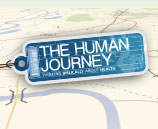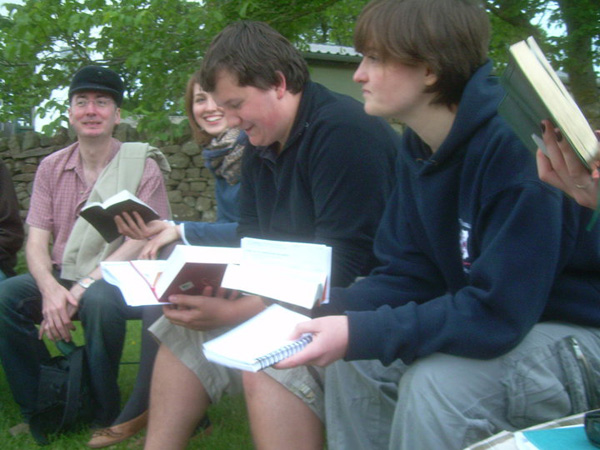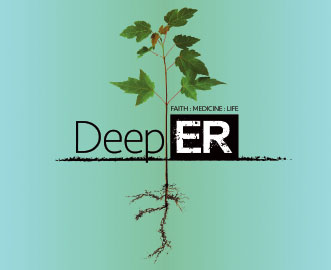Geography
The fertile Kullu Valley rises northward from 760m to 3978m. In the south the river can be found a sheer 30Om below the narrow road. Further up, the valley widens and there are apple orchards, rice paddies and wheat fields. Pine forests sprawl over the higher slopes with the snow covered ice mountains looming behind.
The People
The men wear the Kullu cap, a pillbox usually of bright local colours. The women wear homespun woollen shawls to which silver pins are attached. I found them to be extremely friendly and generous.
Other people found in the valley are the nomads, (Gaddis), seen wandering the slopes with their sheep and goats.
The valley also has many Tibetan and Nepali refugees. The Tibetans have now settled and prospered, running restaurants and craftshops. The Nepalese sell all their possessions for their journey to India. You see families sitting by the roadsides breaking rocks. They get paid a pittance, not enough to clothe or feed their children; a pitiful sight.
Manali
Manali has a population of around 25,000. It has grown as a holiday resort. It now has over 150 hotels. The picturesque landscape is changing into a builder's yard. It is famous for its marijuana. Smaller villages surround the main town which have semi-permanent 'hippies' as residents.
Lady Willingdon Hospital (LWH)
A small Christian hospital with about 35 in-patient beds. Funding comes from western aid organisations. The original building dates back to the beginning of this century, but it has grown in size smce then. It is situated on an enclosed compound, along with a small church and school.
Touch Down!
It was 3 a.m. local time. The 10 hour flight had left me tired, stiff and disorientated. My malarial prophylactics were making me vomit.
We cadged a lift with another student's escort to the Interstate Bus Terminal. It was a warm night. We drove through the empty streets of Delhi. At first I could not make out the bundles in the gutters. It was only when they moved that I realised they were people sleeping under blankets. We passed slums and more beggars and only then did the enormity of the poverty really sink in.
People were defecating and urinating blatantly in the streets whilst children played alongside them. Nothing I could have read truly prepared me for this.
We shared our bit of tarmac with cars, buses, lorries, rickshaws, mopeds, pedestrians, cows, carts. There was no order, no junctions, definitely no rules. Horns beeped, people yelled - this was something out of a Hindi movie!
After a short sleep we caught our bus and it left Delhi at 6 p.m. The journey took 15 hours. The roads were narrow and winding, twisting up into the mountain range. Eventually we reached Manali.
Living
My room looked like a prison cell. Small, dark, cold, damp and smelly. My heart sank. There was not even a bed. I could have cried. However, all was rectified soon enough and I was given a wooden camp bed and a blood stained mattress. My first task was to clean the room and the adjoining bathroom. I had a flushing toilet, basin and cold tap. Bathing took on a whole new dimension!
Working
We were introduced to the team. Larji, the Indian Doctor-in-charge, Colin a SR. in Anaesthetics, (there for I year) and Norman, a GP from London. There was also an American medical student named Ben.
We started work the very next day with a ward round. The patients were medical and post-operative.
The first man had miliary TB and hepatitis A. He was so thin he could not stand. The room he was in was dark, dirty, damp and depressing. All the other rooms were very similar. I felt disgusted and appalled. I felt like I was in some alien world, not like any I had every experienced before.
Out Patients
We had two Hindi interpreters. It was a friendly atmosphere. I sat with my Oxford Handbook and BNF firmly in my grasp and started seeing patients. The history was difficult to elicit, but somehow the main symptoms were communicated. I had an old wooden examining table. The only other piece of equipment, apart from my trusting stethoscope, was an old sphygmomanometer. I made my diagnosis and sent my ?TB lung off for a chest X-ray. The film returned with its owner 30 minutes later, still dripping wet. Yes, definitely TB-bilateral with a probable effusion. He was admitted, a diagnostic tap done and four anti-TB drugs prescribed. He would need at least 12 months treatment.
Thanks to the High Commission of India, Lady Willingdon Hospital also had an ultrasound machine. This was of huge benefit and I got well acquainted with gallstones and uteruses.
On Call
There were three doctors and three medical students. I was first on call every third day. This at first proved to be an awesome responsibility, but I soon learned to cope.
I heard shouting coming from the triage area. Two bodies lay on the couches, covered with blood and mud. One a young lad of about 6 or 7, the other a frail old woman. I was immediately surrounded by a cluster of men, all gabbling on in Hindi. I don't think I have ever felt so helpless in all of my life. Quickly I assessed the two casualties: ABC. The woman was conscious, but the boy was not as good. I decided to deal with him first. His skull and face were smashed to pieces. I assessed his airway; it was patent. However, his breathing was irregular and gurgling. Both his pupils were fixed and dilated. I was trying to gain intravenous access. I have never been so glad to see a doctor's face. He took one look at the boy and announced that he was not going to make it, so to stop my efforts. Before I could protest he was assessing the old woman. He intubated and I ventilated using a bag and mask. She had a fracture of her left femur, pelvis, multiple left ribs and left humerus.
The boy died in front of us. I'd never seen that before. I felt so useless. The old woman was admitted, but she also died.
Later on we discovered that they were grandmother and grandson who had been collecting water from a well at the roadside. A truck had deviated from the road and run them down.
My second road traffic accident arrived soon after. An Indian tourist bus had hurtled off the side of the road into the valley 30 feet below. It was madness, with people everywhere. There were three women with serious injuries. All were admitted and stabilised. We reduced a fractured humerus in one, taking care of her brachial plexus and axillary artery. Her arm was put into a makeshift splint. A woman with a fractured pelvis developed a rigid abdomen, so we did an emergency laparotomy. She had multiple lacerations of her bowel at the splenic flexure, so this portion was removed. Unfortunately her wound broke down and so she travelled back to Delhi with almost an open laparotomy.
The next day was much quieter. On the ward round we saw a man with Buergers disease who had had four toes amputated the previous week. He had now given up smoking. Also a lady, who had presented with a foul smelling gangrenous pedunculated fibroid, who had been treated 'conservatively' by the local government hospital. She was waiting for a hysterectomy, but her haemoglobin was 2.7. (the normal being about 14 at that altitude). She needed blood before we could operate.
That night I saw an elderly man who was in acute retention. I catheterised him but he developed a gross haematuria. PR his prostate felt hard and irregular. His pelvic X-ray confirmed prostatic metastases and he commenced taking Stilboestrol.
Each day I saw more and more outpatients: TB, typhoid, hepatitis A, were the common adult disorders. Worms, pneumonia, diarrhoea and vomiting were the regular paediatric cases. Heart failure would be secondary to lung disease from cigarettes, 'biddies' or fire smoke.
A typhoid case on the ward developed peritonitis. At laparotomy we could see worms crawling out of his perforations. It was explained that round-worms have been known to crawl up and block naso-gastric tubes!
I saw a very sick child, with a 20 day history of fever, headache, vomiting and seizures. They had taken him to another hospital where he had been given anti-TB treatment and been discharged. They told us that they had been driving for two days to find a doctor. T he child was 4 years old, but weighed only 8.5 kg. He was fitting continuously. His little scrawny neck was hyper extended and both pupils were fixed and dilated. He had TB Meningitis. We admitted him, established IV access and an naso-gastric tube. He continued to live for a few more days. It made me so angry to think that he had been discharged. The family accepted his death and took his pathetic little body home for his funeral.
My weeks at Lady Willingdon Hospital were hard work and packed in with organic disease, living anatomy and pathology I've only seen in text books. I can't begin to explain what an impact it had on my life personally and professionally. I came to be part of 'the team'. The dirt and the smells no longer bothered me, but were just everyday life. The bouts of inevitable diarrhoea weren't even too bad!
Theatre
I grew in confidence and my clinical skills improved no end. I got plenty of hands-on experience. A typical Tuesday list would consist of 2 cholecystectomies, 2 hysterectomies, 2 cleft lip and palates, a hypospadias, a hydatid cyst removal, a couple of lymph node removals and perhaps a few minors added on.
I got to give spinal blocks and watch general anaesthetics (G.A.) given. I ventilated patients under G.A. and administered ether to babies faces over a cotton-wool mask. I was usually left to close up and write the notes.
I sutured wounds by torch light in the middle of the night, as we would have no electricity. This would prove tricky with blunt recycled needles, cotton and gloves three sizes too big!
During my time I was also taught to remove and insert CU-T contraceptive devices which was useful, as the women patients took a preference to the 'lady doctor'.
I also got some obstetric practice and helped to deliver caesarean sections, breaches and normal deliveries. I began to enjoy my on-call days and never left my room without BNF and Oxford handbook at the ready.
Prevention?
Another upsetting occasion was when a young girl of 14 presented to us. She had been on a school trip to a village high at the snow line. Their teacher had taken them to an out of bounds area. An avalanche had occurred and a huge slab of ice hit her, breaking her spine and rendering her paraplegic. She was flown to Delhi by military helicopter after stabilisation at LWH. It was a tragic case as I don't think that she understood the full extent of her injuries.
There was a community health team attached to LWH. Their main objective was an immunisation programme for children locally and in nearby villages. I accompanied them to two villages up in the mountain area. We set off at 6.30 a.m. in the LWH jeep. Sister, her nurses, me and a driver. We followed the winding roads up into the peaks. The views were spectacular. A clinic was established in a cowshed. Records were kept of the children in the village. The programme was WHO recommended, including BCG at birth triple vaccine and Hib vaccine.
Personal Study
'Polio plus' is a Rotary International programme to immunise the children of the world. The Indian Government were determined to provide a package of health, nutrition and informal educational services for mothers and children. In 1975, the Integrated Child Development services programme was launched. According to the latest figures I could find, the prevalence of residual paralytic poliomyelitis in North India was of 1 per 1000 born during 19841988. Compared with a figure of 9.6 times higher ten years earlier.
LWH also ran an extensive TB programme. I had to fill in a TB card and register. Weight and pulse were taken as clinical indicators for wellbeing and a chest X-ray was routinely done. The history was usually clear cut - an insidious onset of cough and weight loss, fever, night-sweats and chest pain or haemoptysis. We saw the patients monthly. It was impossible to do contact tracing.
A paper looking at out-patient treatment, in TB, in two hospitals in Northern India, concluded that the default was a major problem irrespective of follow-up procedures employed. This was my personal experience at LWH.
The Trek
It would have been criminal to live and work amongst the magnificent Himalayan mountains for eight weeks and not see some of the gorgeous countryside.
We set out on a four day trekking expedition; my elective partner, myself, our guide, two helpers, a horse and copious amounts of equipment. These four days were incredible. The scenery included all terrains; terraced paddy fields, orchards in the low regions, pine forests higher up and snow-capped peaks higher still. The flora and fauna we saw varied from snow-wolf to golden eagles majestically cruising above us. It was a once in a lifetime experience!
Conclusion
My visit to LWH had huge personal and professional beneficial effects. It improved my confidence in knowledge, history and physical examination as the basis for diagnosis and treatment. It improved my skills in differential diagnoses and gave me a greater appreciation of the health consequences of economic policy. It enhanced my awareness of costs and enriched my understanding of the clinical significance of cultural factors in the presentation, diagnosis, course, consequences and management of illness.
The fertile Kullu Valley rises northward from 760m to 3978m. In the south the river can be found a sheer 30Om below the narrow road. Further up, the valley widens and there are apple orchards, rice paddies and wheat fields. Pine forests sprawl over the higher slopes with the snow covered ice mountains looming behind.
The People
The men wear the Kullu cap, a pillbox usually of bright local colours. The women wear homespun woollen shawls to which silver pins are attached. I found them to be extremely friendly and generous.
Other people found in the valley are the nomads, (Gaddis), seen wandering the slopes with their sheep and goats.
The valley also has many Tibetan and Nepali refugees. The Tibetans have now settled and prospered, running restaurants and craftshops. The Nepalese sell all their possessions for their journey to India. You see families sitting by the roadsides breaking rocks. They get paid a pittance, not enough to clothe or feed their children; a pitiful sight.
Manali
Manali has a population of around 25,000. It has grown as a holiday resort. It now has over 150 hotels. The picturesque landscape is changing into a builder's yard. It is famous for its marijuana. Smaller villages surround the main town which have semi-permanent 'hippies' as residents.
Lady Willingdon Hospital (LWH)
A small Christian hospital with about 35 in-patient beds. Funding comes from western aid organisations. The original building dates back to the beginning of this century, but it has grown in size smce then. It is situated on an enclosed compound, along with a small church and school.
Touch Down!
It was 3 a.m. local time. The 10 hour flight had left me tired, stiff and disorientated. My malarial prophylactics were making me vomit.
We cadged a lift with another student's escort to the Interstate Bus Terminal. It was a warm night. We drove through the empty streets of Delhi. At first I could not make out the bundles in the gutters. It was only when they moved that I realised they were people sleeping under blankets. We passed slums and more beggars and only then did the enormity of the poverty really sink in.
People were defecating and urinating blatantly in the streets whilst children played alongside them. Nothing I could have read truly prepared me for this.
We shared our bit of tarmac with cars, buses, lorries, rickshaws, mopeds, pedestrians, cows, carts. There was no order, no junctions, definitely no rules. Horns beeped, people yelled - this was something out of a Hindi movie!
After a short sleep we caught our bus and it left Delhi at 6 p.m. The journey took 15 hours. The roads were narrow and winding, twisting up into the mountain range. Eventually we reached Manali.
Living
My room looked like a prison cell. Small, dark, cold, damp and smelly. My heart sank. There was not even a bed. I could have cried. However, all was rectified soon enough and I was given a wooden camp bed and a blood stained mattress. My first task was to clean the room and the adjoining bathroom. I had a flushing toilet, basin and cold tap. Bathing took on a whole new dimension!
Working
We were introduced to the team. Larji, the Indian Doctor-in-charge, Colin a SR. in Anaesthetics, (there for I year) and Norman, a GP from London. There was also an American medical student named Ben.
We started work the very next day with a ward round. The patients were medical and post-operative.
The first man had miliary TB and hepatitis A. He was so thin he could not stand. The room he was in was dark, dirty, damp and depressing. All the other rooms were very similar. I felt disgusted and appalled. I felt like I was in some alien world, not like any I had every experienced before.
Out Patients
We had two Hindi interpreters. It was a friendly atmosphere. I sat with my Oxford Handbook and BNF firmly in my grasp and started seeing patients. The history was difficult to elicit, but somehow the main symptoms were communicated. I had an old wooden examining table. The only other piece of equipment, apart from my trusting stethoscope, was an old sphygmomanometer. I made my diagnosis and sent my ?TB lung off for a chest X-ray. The film returned with its owner 30 minutes later, still dripping wet. Yes, definitely TB-bilateral with a probable effusion. He was admitted, a diagnostic tap done and four anti-TB drugs prescribed. He would need at least 12 months treatment.
Thanks to the High Commission of India, Lady Willingdon Hospital also had an ultrasound machine. This was of huge benefit and I got well acquainted with gallstones and uteruses.
On Call
There were three doctors and three medical students. I was first on call every third day. This at first proved to be an awesome responsibility, but I soon learned to cope.
I heard shouting coming from the triage area. Two bodies lay on the couches, covered with blood and mud. One a young lad of about 6 or 7, the other a frail old woman. I was immediately surrounded by a cluster of men, all gabbling on in Hindi. I don't think I have ever felt so helpless in all of my life. Quickly I assessed the two casualties: ABC. The woman was conscious, but the boy was not as good. I decided to deal with him first. His skull and face were smashed to pieces. I assessed his airway; it was patent. However, his breathing was irregular and gurgling. Both his pupils were fixed and dilated. I was trying to gain intravenous access. I have never been so glad to see a doctor's face. He took one look at the boy and announced that he was not going to make it, so to stop my efforts. Before I could protest he was assessing the old woman. He intubated and I ventilated using a bag and mask. She had a fracture of her left femur, pelvis, multiple left ribs and left humerus.
The boy died in front of us. I'd never seen that before. I felt so useless. The old woman was admitted, but she also died.
Later on we discovered that they were grandmother and grandson who had been collecting water from a well at the roadside. A truck had deviated from the road and run them down.
My second road traffic accident arrived soon after. An Indian tourist bus had hurtled off the side of the road into the valley 30 feet below. It was madness, with people everywhere. There were three women with serious injuries. All were admitted and stabilised. We reduced a fractured humerus in one, taking care of her brachial plexus and axillary artery. Her arm was put into a makeshift splint. A woman with a fractured pelvis developed a rigid abdomen, so we did an emergency laparotomy. She had multiple lacerations of her bowel at the splenic flexure, so this portion was removed. Unfortunately her wound broke down and so she travelled back to Delhi with almost an open laparotomy.
The next day was much quieter. On the ward round we saw a man with Buergers disease who had had four toes amputated the previous week. He had now given up smoking. Also a lady, who had presented with a foul smelling gangrenous pedunculated fibroid, who had been treated 'conservatively' by the local government hospital. She was waiting for a hysterectomy, but her haemoglobin was 2.7. (the normal being about 14 at that altitude). She needed blood before we could operate.
That night I saw an elderly man who was in acute retention. I catheterised him but he developed a gross haematuria. PR his prostate felt hard and irregular. His pelvic X-ray confirmed prostatic metastases and he commenced taking Stilboestrol.
Each day I saw more and more outpatients: TB, typhoid, hepatitis A, were the common adult disorders. Worms, pneumonia, diarrhoea and vomiting were the regular paediatric cases. Heart failure would be secondary to lung disease from cigarettes, 'biddies' or fire smoke.
A typhoid case on the ward developed peritonitis. At laparotomy we could see worms crawling out of his perforations. It was explained that round-worms have been known to crawl up and block naso-gastric tubes!
I saw a very sick child, with a 20 day history of fever, headache, vomiting and seizures. They had taken him to another hospital where he had been given anti-TB treatment and been discharged. They told us that they had been driving for two days to find a doctor. T he child was 4 years old, but weighed only 8.5 kg. He was fitting continuously. His little scrawny neck was hyper extended and both pupils were fixed and dilated. He had TB Meningitis. We admitted him, established IV access and an naso-gastric tube. He continued to live for a few more days. It made me so angry to think that he had been discharged. The family accepted his death and took his pathetic little body home for his funeral.
My weeks at Lady Willingdon Hospital were hard work and packed in with organic disease, living anatomy and pathology I've only seen in text books. I can't begin to explain what an impact it had on my life personally and professionally. I came to be part of 'the team'. The dirt and the smells no longer bothered me, but were just everyday life. The bouts of inevitable diarrhoea weren't even too bad!
Theatre
I grew in confidence and my clinical skills improved no end. I got plenty of hands-on experience. A typical Tuesday list would consist of 2 cholecystectomies, 2 hysterectomies, 2 cleft lip and palates, a hypospadias, a hydatid cyst removal, a couple of lymph node removals and perhaps a few minors added on.
I got to give spinal blocks and watch general anaesthetics (G.A.) given. I ventilated patients under G.A. and administered ether to babies faces over a cotton-wool mask. I was usually left to close up and write the notes.
I sutured wounds by torch light in the middle of the night, as we would have no electricity. This would prove tricky with blunt recycled needles, cotton and gloves three sizes too big!
During my time I was also taught to remove and insert CU-T contraceptive devices which was useful, as the women patients took a preference to the 'lady doctor'.
I also got some obstetric practice and helped to deliver caesarean sections, breaches and normal deliveries. I began to enjoy my on-call days and never left my room without BNF and Oxford handbook at the ready.
Prevention?
Another upsetting occasion was when a young girl of 14 presented to us. She had been on a school trip to a village high at the snow line. Their teacher had taken them to an out of bounds area. An avalanche had occurred and a huge slab of ice hit her, breaking her spine and rendering her paraplegic. She was flown to Delhi by military helicopter after stabilisation at LWH. It was a tragic case as I don't think that she understood the full extent of her injuries.
There was a community health team attached to LWH. Their main objective was an immunisation programme for children locally and in nearby villages. I accompanied them to two villages up in the mountain area. We set off at 6.30 a.m. in the LWH jeep. Sister, her nurses, me and a driver. We followed the winding roads up into the peaks. The views were spectacular. A clinic was established in a cowshed. Records were kept of the children in the village. The programme was WHO recommended, including BCG at birth triple vaccine and Hib vaccine.
Personal Study
'Polio plus' is a Rotary International programme to immunise the children of the world. The Indian Government were determined to provide a package of health, nutrition and informal educational services for mothers and children. In 1975, the Integrated Child Development services programme was launched. According to the latest figures I could find, the prevalence of residual paralytic poliomyelitis in North India was of 1 per 1000 born during 19841988. Compared with a figure of 9.6 times higher ten years earlier.
LWH also ran an extensive TB programme. I had to fill in a TB card and register. Weight and pulse were taken as clinical indicators for wellbeing and a chest X-ray was routinely done. The history was usually clear cut - an insidious onset of cough and weight loss, fever, night-sweats and chest pain or haemoptysis. We saw the patients monthly. It was impossible to do contact tracing.
A paper looking at out-patient treatment, in TB, in two hospitals in Northern India, concluded that the default was a major problem irrespective of follow-up procedures employed. This was my personal experience at LWH.
The Trek
It would have been criminal to live and work amongst the magnificent Himalayan mountains for eight weeks and not see some of the gorgeous countryside.
We set out on a four day trekking expedition; my elective partner, myself, our guide, two helpers, a horse and copious amounts of equipment. These four days were incredible. The scenery included all terrains; terraced paddy fields, orchards in the low regions, pine forests higher up and snow-capped peaks higher still. The flora and fauna we saw varied from snow-wolf to golden eagles majestically cruising above us. It was a once in a lifetime experience!
Conclusion
My visit to LWH had huge personal and professional beneficial effects. It improved my confidence in knowledge, history and physical examination as the basis for diagnosis and treatment. It improved my skills in differential diagnoses and gave me a greater appreciation of the health consequences of economic policy. It enhanced my awareness of costs and enriched my understanding of the clinical significance of cultural factors in the presentation, diagnosis, course, consequences and management of illness.






























